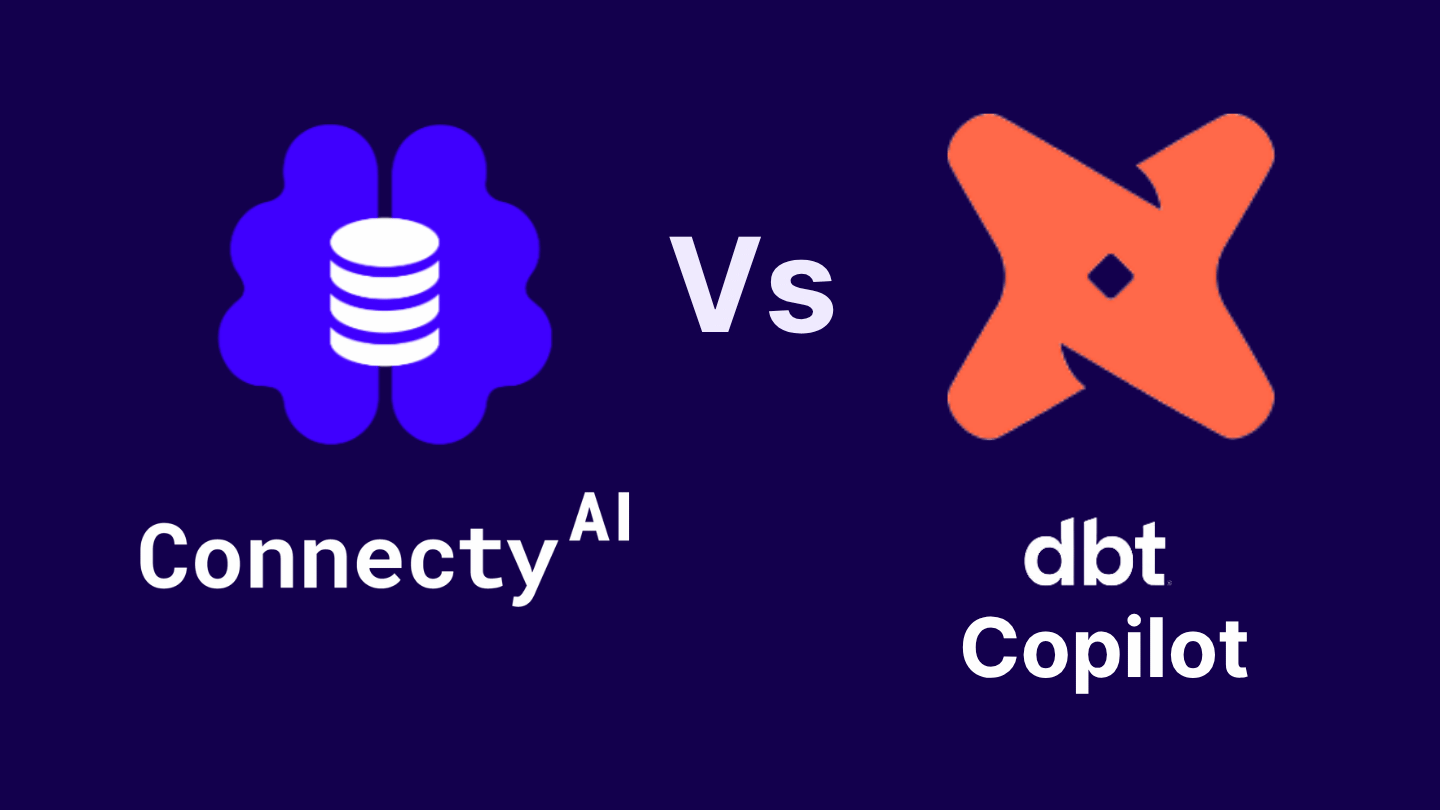
What is dbt?
dbt (Data Build Tool) is a popular framework for data transformation used primarily by data engineers. It allows users to write modular SQL and define models, tests, and documentation in YAML. dbt helps teams build clean, reliable datasets inside their data warehouse using a SQL-first approach. It’s especially powerful for pipeline versioning, schema enforcement, and ensuring transformations are repeatable and testable.
More recently, dbt Copilot introduces AI assistance for generating SQL, documentation, and semantic models-but this remains scoped to individual models and requires manual validation and YAML config. dbt’s governance features focus on enforcing structure and visibility at the model level.
What is Connecty AI?
Connecty AI is an agentic analytics platform powered by an autonomous semantic graph that understands the business logic across your entire dataset from day one. Instead of relying on manually defined YAML or static SQL models, Connecty continuously learns from query patterns, dashboards, and data relationships to build a reusable, explainable layer of metrics, dimensions, and filters.
It enables users-especially data analysts and business teams-to ask complex questions in natural language and get deeply validated, explainable results. With built-in reasoning, version control, metric drift detection, collaborative chat analysis, and fine-grained access control, Connecty acts as a semantic layer and an AI-powered analyst.
A Note on This Comparison
Comparing two rapidly evolving platforms-especially in a space as fast-moving as AI -is inherently challenging. Many popular software comparison sites often miss the nuance of real-world use cases, rely on surface-level information, or are influenced by sponsored content.
That said, our clients frequently ask for a clear, transparent comparison to help inform internal decisions and align stakeholders. So, we’ve put together this comparison based on publicly available information and our best understanding of the current capabilities of the discussed product. We may not be aware of features still in beta or behind closed pilots, and we will do our best to keep this page updated as things evolve.
We welcome corrections. If you believe any detail here is inaccurate, please reach out to our support team with relevant documentation or sources if possible. We’ll gladly review and make necessary updates.
Final Verdict: dbt vs. Connecty AI
Comparing dbt and Connecty AI illustrates a fundamental difference in architecture:
- dbt is SQL-centric and model-first: everything is manually defined, validated, and version-controlled by engineers. It’s ideal for building and maintaining pipelines in production.
- Connecty AI is semantic-first and agentic: it builds its own understanding of your data and uses that knowledge to drive analysis, documentation, governance, and reasoning-without requiring manual setup.
Both tools are valuable, but they serve different layers of the modern data stack.
dbt Copilot
Strengths:
- SQL-first pipeline modeling with modularity and testing
- Version-controlled transformations with strong CI/CD workflows
- Model-level governance features (contracts, visibility, cross-project refs)
Weaknesses:
- Requires manual YAML setup for semantics and metrics
- No dataset-wide semantic awareness or metric reuse
- No built-in AI reasoning, explainability, or collaboration features
Connecty AI
Strengths:
- Day-zero semantic graph that understands full dataset relationships
- Autonomous metric discovery (Metricverse) with versioning, drift detection, and validation
- Fully automated documentation with active metadata usage
- Natural language chat with deep reasoning, auditability, and collaboration
- Governance designed for analytics: access control, metric impact tracking, auto-updating docs
Weaknesses:
- Less focused on defining SQL-based transformation pipelines
- Depends on connected data warehouses for query execution and metadata sync
Bottom line:
Use dbt when you need structured, testable pipelines and full control over SQL transformations.
Use Connecty AI when you want a semantic-aware, AI-powered platform that can reason over your data, explain metrics, and enable teams to explore, collaborate, and govern insights at scale.
Book a demo and test it yourself.











